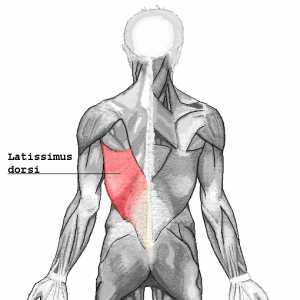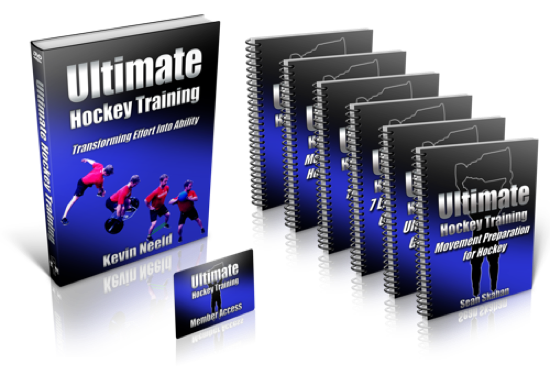I wanted to kick this week off by following up on an article from last week on a few tips to help hockey players improve their skating technique. If you missed it, you can check it out here: 3 Keys to Developing Optimal Skating Technique
In that article, I alluded to the fact that players often have limitations that aren’t purely a failure to express their full capacity. In other words, they can’t simply be “cued” into skating better, they have some other issue that needs to be addressed to either remove a barrier to optimal performance or improve their capacity for optimal performance.
Barriers to Optimal Skating Depth
Achieving an optimal skating depth is important for maximize stride length/power, as well as stability and resilience to unexpected contact or obstacles. That said, there is a significant number of players that don’t skate lower because they flat-out cannot get there. The two most common culprits are:
Of these two limitations, FAI is structural and typically affects older more advanced players that have put a lot more mileage on their bodies, whereas a lack of strength is more functional and can affect players at all levels but typically affects younger players.
I’ve written a lot about FAI on the past (See: Training Around FAI; Performance Training: Adaptations for FAI; and An Updated Look at FAI), so I’ll keep it simple here, but the idea is that there is a BONY limitation to hip flexion range of motion. In other words, the player cannot and never will be able to achieve a deeper skating stance (without surgery) and attempting to force a lower depth, or even spending significant amount of time near end-range will almost definitely shred the labrum. In these cases, the players essentially have two options: 1) Get surgery; 2) Skate slightly higher. Given that these limitations tend to be cumulative over time, I wouldn’t be quick to jump to surgery unless the player is noticing significant symptoms. There are a ton of players competing at the highest levels in the world that are simply working around these limitations. That said, it’s still important to be aware of them, so you don’t attempt to “drive through” them on or off the ice.
A lack of strength is one of the most common issues we see in youth players who cannot achieve or maintain a deep skating stance. This is pretty straight-forward; they can’t skate in a deep position because they don’t possess the strength to hold themselves there. Hopefully the coaches reading this will understand the difference between “choosing not to” and “not possessing the capacity to do so”. One, the former, may justify some enthusiastic reminders to get into a deeper stance; another, the latter, involves a different approach. At youth levels (squirts through bantams), you’re likely to see a lot of the latter, meaning you can save yourself some throat irritation and mental anguish by just training the kids to improve their strength off the ice, instead of yelling at them on the ice.
If you lack equipment, as in most youth settings, an easy way to do this is with what I call “IsoHolds”. We generally do these in two positions: Squat IsoHolds and Split Squat IsoHolds. Split Squat IsoHolds are a more advanced variation, as they require single-leg strength, but ultimately I think this is the more advantageous option because of the benefits of single-leg training as well as the improvements in flexibility of the back leg. A Squat IsoHold is essentially a “Wall Sit” without the wall. I haven’t had an athlete do a Wall Sit in over 10 years; I stopped once I realized that the athlete did very little to hold the wall up, but the wall did a lot to hold the athlete up. It’s interesting how few youth players can even achieve a quality squat position, let alone hold it for prolonged periods of time (e.g. 30s). Most start the full body quiver around 20s, but few even get there since the form/technique breaks down before then. For other benefits of IsoHold work, check out this video:
Foot Stability
The foot is often an overlooked piece of the puzzle in hockey players because it’s locked away in a hard boot. That said, the foot is incredibly important in maintaining stability of the skate, as it’s the final link between the body and the blade. I’ve learned a lot from Jim Snider, the Strength and Conditioning Coach at the University of Wisconsin, over the last several years, but when he told me that players that have collapsed arches in their feet (or, quite differently, arches that collapse) tend to ride their inside edges a big light bulb went off for me. The bottom line is that over-pronation of the foot on the glide leg translates into a mild collapse of the skate blade toward the inside edge. This increases the friction of the skate on the ice, decreases glide efficiency and ultimately dampens the power generated from the opposing leg.
An inward collapse of the foot also tends to cause an inward collapse of the knee, which can cause problems higher up. Just because the foot is locked into a skate boot doesn’t mean it’s not important. At Endeavor, we’re constantly looking at how our players’ feet position and respond to loading off the ice, and try to sift out which players have collapsed arches (which are typically better candidates for orthotics) and which have arches that collapse (which can typically be trained back to optimal function).
Hip Stability
Just as an inward collapse of the foot can cause an inward collapse of the knee, poor hip stability can cause the femur (and knee) to collapse inward too. In other words, these stability issues travel both ways, from the foot up and from the hip down, and can have similar consequences. When the knees collapse in, it can cause a player to ride the inside edge on their glide leg, but it can also limit the power capacity of the stride leg. It’s a double-edge sword. David Lasnier filmed a video demonstrating this inward collapse during a Box Jump. Can you see it?
Lumbar Stability
While skating, it’s important for players to maintain a neutral lumbar spine position, meaning a slight inward curve. As with sprinting off the ice, maximal speed on the ice utilizes diagonal force transfer between your glutes and opposite lats (or hip and opposite shoulder).

Note how the left “Lat” in red has fibers that appear to connect almost directly into the right gluteus maximus.
As one hip flexes, so does the opposite shoulder (stretching this lat-glute connection); at the same time, as one hip extends, so does the opposite shoulder (shortening this lat-glute connection). This connection provides an incredible opportunity for force transfer between the upper and lower body. Maximizing force transfer is predicated upon maintaining the transitional segments (e.g. the lumbar spine) in an optimal position, neutral, to do so. While I’ve seen hockey players that err both ways (too much extension and too much flexion), the majority tend to round excessively through their lower back (excessive flexion). This not only dampens efficient force transfer between the upper and lower body, it also can be a source of pain in itself. Know a hockey player with low back pain? This could be a reason why.
Once again, this is a positioning/movement fault that can be aggressively trained off the ice. It’s important for players to learn what “neutral spine” is and feels like, possess the ability to maintain it under load, and be able to transfer it to the skating position. Without question, every player is going to flex and extend through their lumbar spine during the course of every practice and every game. The goal here is to help them find a neutral position and make this their norm, so they don’t constantly gravitate or bias toward an excessively flexed position. One way to help bridge the gap between traditional off-ice exercises and on-ice work is through the use of slideboards. When a player is on a slideboard, you can help them find their optimal skating depth and a neutral lumbar spine position and see how they respond with a movement similar to skating and with fatigue.
Split Squat IsoHold into Slideboard
Note how Jeff Buvinow, who recently wrapped up a great 4-year career at Brown University, maintains a good skating posture and neutral spine throughout the exercise on the first slideboard. This video was taken the first time these guys had been introduced to this type of training, so the first day was a little sloppy, but they improved significantly over the next few weeks.
Wrap Up
There is a lot to consider in maximizing skating performance, which is a positive. It means there are lots of areas for potential improvement. The players and coaches that have this information are better prepared to address all components of skating performance, including technical, structural, and functional factors. Not every player has the same potential, but the player who maximizes a lesser potential has an opportunity to out play the player that fails to maximize a greater potential.
To your success,
Kevin Neeld
OptimizingMovement.com
UltimateHockeyTraining.com
Please enter your first name and email below to sign up for my FREE Athletic Development and Hockey Training Newsletter!
“…an extremely rare comprehensive look at the present state of ice hockey training.”
“…a must-have for coaches and strength professionals at all levels of hockey.”
